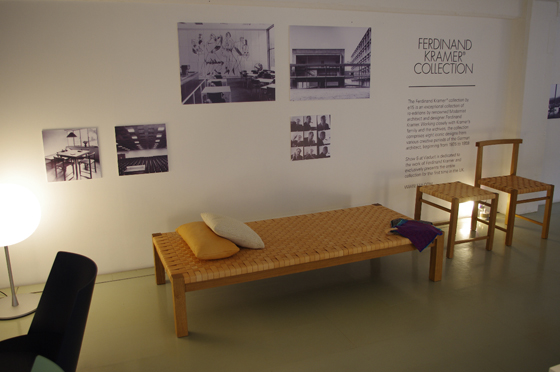Internal Culture: design history revisited at London design showrooms during LDF 2012
Text by Simon Keane-Cowell
Zürich, Switzerland
27.09.12
While the London Design Festival's big-top design destinations, such as Super Brands London, Tent, designjunction and 100% Design pulled large crowds, a number of design brands used their city showrooms as spaces for serving up fascinating slices of design-historical culture. Here's some of what was on the menu.
Before Vignelli there was Matter: Herbert Matter's old logotype for Knoll in the window of their West End showroom during the London Design Festival 2012
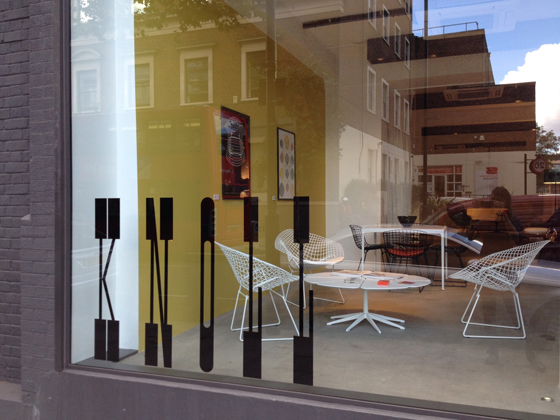
Before Vignelli there was Matter: Herbert Matter's old logotype for Knoll in the window of their West End showroom during the London Design Festival 2012
×For once, you can believe the hype. This year's London Design Festival – with its Phoenix-like, born-again 100% Design fair, carefully curated must-see venue designjunction, plus punch-packing destinations Super Brands London and Tent – had a genuinely renewed energy about it, fit for a city with a reputation as one of the world's truly global design hubs.
But while these headline events drew international crowds, eager to see the latest material offerings and ideas from manufacturers and independent designers alike, a number of leading design brands chose, on a more modest scale, to acknowledge the cultural significance of design by curating in-showroom shows with a decidedly design-historical inflection.
Swiss-born graphic-design hero Herbert Matter's posters and advertising for Knoll grace the walls of the American brand's showroom on London's Mortimer Street

Swiss-born graphic-design hero Herbert Matter's posters and advertising for Knoll grace the walls of the American brand's showroom on London's Mortimer Street
×Knoll chose its Clerkenwell showroom as venue to pay homage to a key figure from the brand's rich graphic heritage – pioneering Swiss-born graphic designer Herbert Matter. Matter, who studied and worked in Geneva and Paris with the likes of Le Corbusier and Ferninand Léger and whose ground-breaking combination of photomontage with impeccable typography sealed his reputation as one of the 20th century's most innovative commercial designers, acted as design consultant to the American manufacturer from 1946 to 1966.
Visitors to the exhibition, entitled 'Knoll and Matter: Redefining Visual Communication', were given the opportunity to (re)discover Matter's innovative graphic work for Knoll in the form of posters, advertising and branding, a visual vocabulary that helped position the brand at the vanguard of modern furniture design.
German modernist architect and designer Ferdinand Kramer lives again at Viaduct's London showroom, thanks to manufacturer E15's well-chosen reissues of his resolutely rational furniture designs
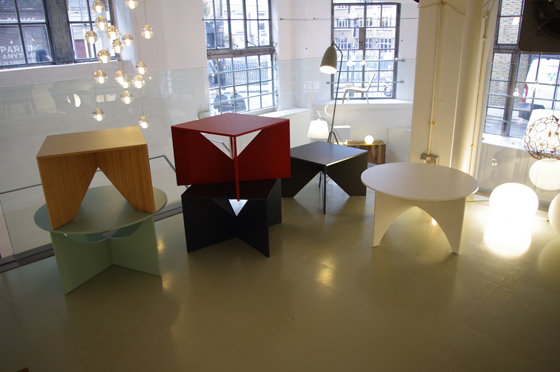
German modernist architect and designer Ferdinand Kramer lives again at Viaduct's London showroom, thanks to manufacturer E15's well-chosen reissues of his resolutely rational furniture designs
×From Switzerland to Germany (via London). Frankfurt-based modernist architect and designer Ferdinand Kramer enjoyed a small London renaissance thanks to E15, whose collection of reissued Kramer furniture pieces was exhibited at UK agents Viaduct's Clerkenwell showroom under the banner 'Show 5: Ferdinand Kramer'.
The designs in question, strong on line and geometry (well, what else would you expect from an arch modernist?), range from a side chair, stool and daybed, originally conceived in 1925 for a house in Rotterdam by fellow architect and De Stijl member JP Oud, to various tables from the postwar period. Like his architecture, Kramer's furniture expresses a visual and material economy, suggests a certain durability, and is highly legible in terms of function.
Meanwhile, the West End's Mortimer Street became the site of a temporary channelling of French design history, as respected design brand Ligne Roset presented 'The Smoking Room at the Élysée Palace', an exhibition of the manufacturer's collaboration with designer Pierre Paulin that revisits the latter's 1970s furniture designs for the French president's official residence.
A tranche of French design history is served up at Ligne Roset's Mortimer Street showroom with 'The Smoking Room at the Élysée Palace', an exhibition of the French manufacturer's reissued Pierre Paulin furniture designs from the early 1970s
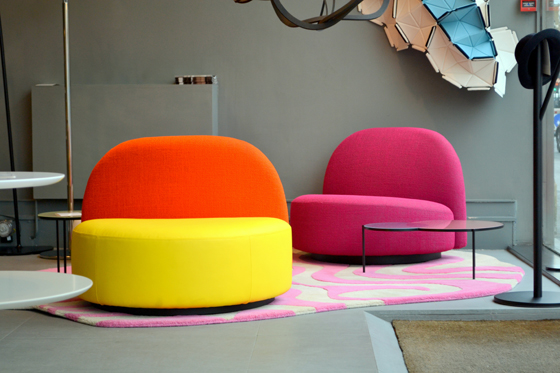
A tranche of French design history is served up at Ligne Roset's Mortimer Street showroom with 'The Smoking Room at the Élysée Palace', an exhibition of the French manufacturer's reissued Pierre Paulin furniture designs from the early 1970s
×Originally commissioned in 1971 by Georges Pompidou and his wife, Claude, to furnish their private apartments, Paulin produced a collection of striking furniture designs, formally of their time, which subsequently (and surprisingly) never went to production. Ligne Roset's welcome reinterpretation of the original furniture scheme, consisting of settee, armchair and footstool, remains faithful to the architectural context in which it first appeared. The curved forms continue to reference the palace's semicircular-walled library, installed for Napoleon III.
Not quite an emperor, but certainly an undisputed member of architectural and design royalty is Italian legend Gio Ponti, who made an invaluable contribution to the creative landscape of the 20th century, through both his design work and his publishing ventures. (Ponti founded, among other magazines, the critically acclaimed Domus in 1928.)
Legendary Milan architect and designer Gio Ponti's elegant furniture designs for his family house on the Via Dezza on show at London's V&A Museum
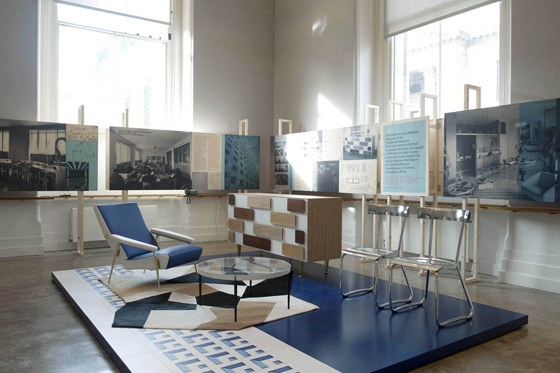
Legendary Milan architect and designer Gio Ponti's elegant furniture designs for his family house on the Via Dezza on show at London's V&A Museum
×As part of his Gesamtkunstwerk of an architectural project on Milan's Via Dezza, designed by the maestro as his own family home, Ponti created a series of just-the-right-side-of-expressive furniture pieces, including armchair, bookcase and chest of drawers, that responded to the space in which they were placed. We can all live like a Ponti family member now thanks to design manufacturer Molteni&C's collaboration with the Ponti Archives, which has seen these and other pieces (including the polished-aluminium 'Montecatini Chair', first designed in 1935 for the Italian chemical firm Montecatini's Milan HQ) brought into production for the first time.
A two-year collaboration between manufacturer Molteni&C and the Ponti Archives has resulted in these previously unavailable but highly covetable designs being reissued
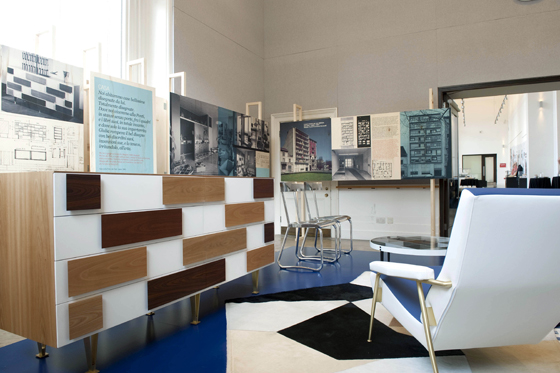
A two-year collaboration between manufacturer Molteni&C and the Ponti Archives has resulted in these previously unavailable but highly covetable designs being reissued
×Both Molteni&C's Shaftesbury Avenue showroom and the V&A Museum were the setting during the London Design Festival for installations of these new/old designs, accompanied by an engaging panel discussion, which included the always entertaining and often provocative design commentator Stephen Bayley and Ponti's daughter, Letizia, who regaled with audience with intimate stories of her design-grandee father.
When it comes to great design, we're all family.




